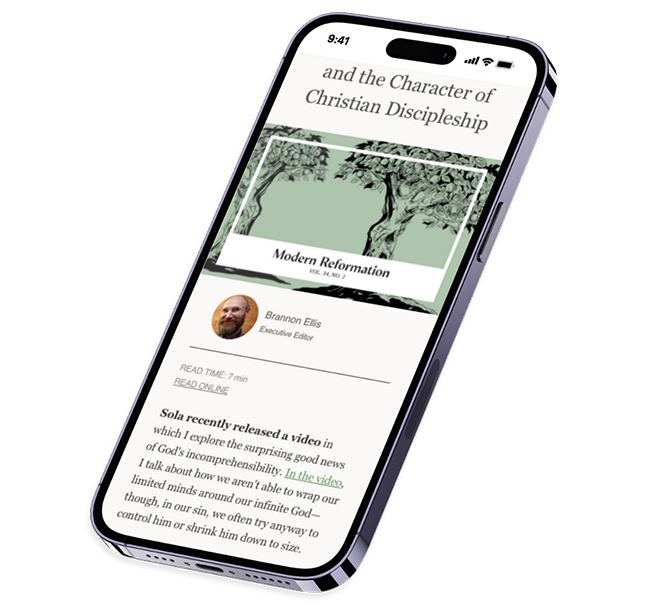Face to Face: Martin Luther’s View of Reality
by Robert Kolb
Lutheran Quarterly Books
Fortress Press | 2024 | 295 pages (paperback) | $39.00
I was drawn to this book by its subtitle, “Martin Luther’s View of Reality”—it might be because of my interests in the human mind, or simply because achieving a correct perception of reality seems particularly challenging in today’s culture. I didn’t know what to expect, but I knew by experience that any fruit of Robert Kolb’s pen is bound to be weighty. I was not disappointed.
Face to Face is organized into six chapters, each dealing with a different aspect of Luther’s relationship with reality. The key word for each chapter is the Latin preposition coram, meaning “in the presence of,” or “face-to-face with.” Through this preposition, Kolb explores Luther’s experiences of coming face-to-face with God hidden and God revealed; with death, sin, the law, God’s wrath, and the devil; with himself; with the world; and with other human beings.
The book is written in a scholarly style but it’s still largely accessible to the average reader—probably because it is mostly the product of six lectures given in 2016 and 2017. “The form of the original lecture has not completely disappeared,” Kolb tells us in his foreword. Besides making the text approachable, this format “permits each chapter to be read as a somewhat independent essay though chapters are arranged to build on each other” (xii).
“This arrangement has led, however, to some repetition,” Kolb warns his readers. As a person who is typically bothered by repetitions, I must say this was not a problem while reading Kolb’s book—probably because the book is packed with profound insights and each repetition adds new layers to what has been said. It is a book that can be read avidly, marked extensively, and re-read slowly.
I have particularly appreciated how Kolb contextualizes the text through constant references to Luther’s life and the development of Luther’s thought. Kolb’s decades of research and reflections allow him to make these references as naturally and effortlessly as if he were talking about his own experience.
This contextualization helps the reader not only to become more acquainted with Luther’s life and thought, but also to be aware of how his thought has progressed, especially in the first few years after his discovery of the gospel. For example, Kolb (citing Heiko Oberman) points out that “Satan assumed a central place in Luther’s combat against evil ... only after his excommunication and the imperial declaration of outlawry in 1521. By that time, he had experienced not only his own personal rebellion against God but also the broader activities of the devil” (81).
I have also appreciated the frequent and extensive citations of Luther’s works. After all, if we are examining Luther’s thought, it is important to hear Luther speak. Equally frequent and insightful are Kolb’s comments that bring to light the relevance of Luther’s thoughts to our lives and our world.
A reader unacquainted with recent works of Lutheran scholarship, particularly those written in German, might feel disoriented by the number of quotes by unfamiliar theologians. I could count on one hand the names I recognized. For example, I had only briefly heard of the theology of Tuomo Mannermaa and his students in Finland, which is discussed at length in the Introduction.
This should not be a deterrent. First, the bulk of these citations are in the Introduction and first chapter, so keep on reading. Second, Kolb never uses these citations gratuitously. As he explains in his foreword, they are meant as an invitation to English-speaking readers to enter conversations “regarding the foundation and framework of Luther’s way of thinking based on some of the scholarly discussions of the past half century” (xiii). Thanks to Kolb’s able arrangement, even readers who, like me, are lacking in scholarly disposition will find themselves at ease when joining these conversations.
What I appreciated the most about this book goes far beyond a simple understanding of Luther’s thought. Almost every page has caused me to stop and reflect on considerations I had never seen expressed in the same terms.
An example of this type of reflection is a passage from the first chapter, dealing with the Creator-creature distinction, which is foundational to Luther’s understanding of our identity, of our relation to God and others, and of reality in general. “This sense of createdness—of having come from somewhere and having some kind of goal that stems from outside of us—leads us to recognize our own ultimate lack of full control over life. It turns us into intermediaries for answers to daily problems. A frantic search for a suitable substitute for our Creator drives us to and fro, as we set our sails to every wind of interpretation of reality that promises to fashion an idol that can stabilize and secure life (Eph. 4:14). We discover that no amount of trying to play God or attain divinity, which is the essence of our sinfulness and our failure to enjoy the fullness of our humanity, can overcome this ultimate judgement of our own self” (47).
Kolb packs so much in this passage. Yet, he is not leaving us to unpack it by ourselves. The whole book discusses the practical implications of our nature as creatures and the ensuing “sense of createdness” we perceive, as well as the deep-rooted problem of our “innate ambition for divinity that was implanted by the devil in paradise” (7). Each chapter builds on the others to enhance our understanding and bring cohesion to our thoughts.
Kolb ends his introduction by saying, “If the book invites, stimulates, provokes fruitful engagement with this sixteenth-century conversation partner, it will have reached its goal” (xiii). I believe it has, and it will continue to be an important reference for both scholarly and devotional studies.






